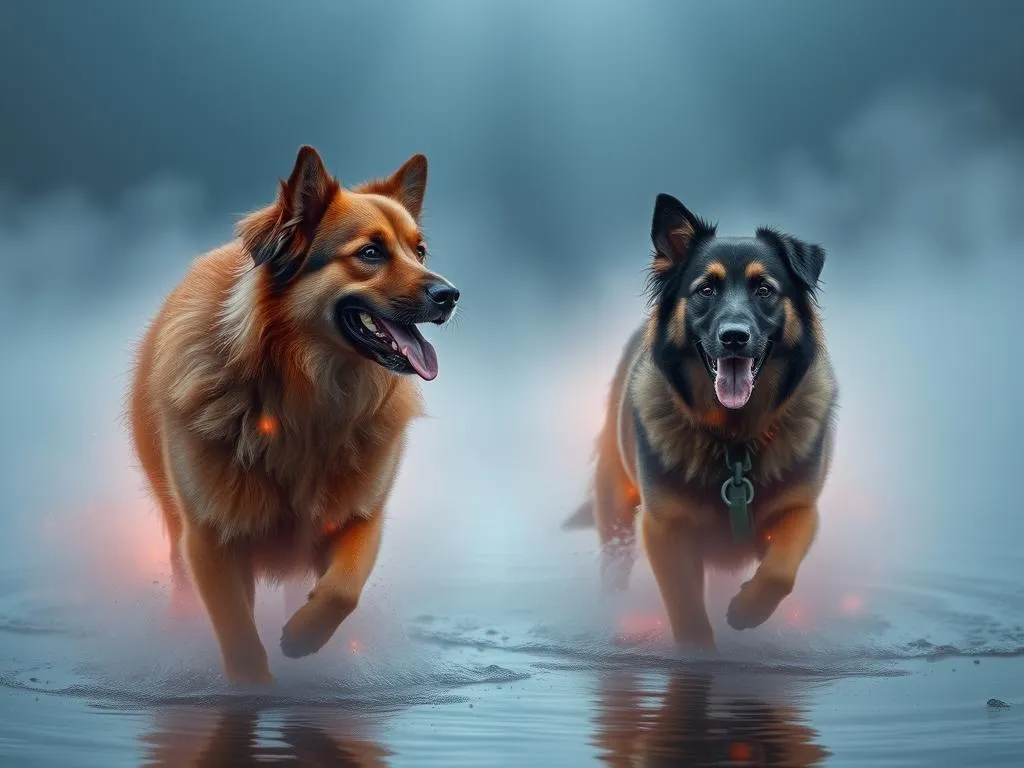
Introduction
Vapor wake dogs are at the forefront of modern security, utilizing their extraordinary scent detection abilities to enhance safety in various environments. These specially trained dogs are capable of detecting the vapor from explosives, making them invaluable assets in law enforcement and public safety. Understanding the intricacies of vapor wake dogs, their training, capabilities, and societal impact provides a glimpse into how they contribute to a safer lifestyle for communities.
What are Vapor Wake Dogs?
Definition
The term “vapor wake” refers to the unique scent trail that follows a person. Unlike traditional detection dogs that identify scents from stationary sources, vapor wake dogs can detect odors as they disperse and travel through the air. This capability allows them to track a potential threat from a distance and identify individuals who might be carrying explosives or other harmful substances.
History and Development
The origins of vapor wake detection can be traced back to advances in canine scent detection techniques. Initially developed for military applications, the methodology evolved over the years, incorporating rigorous training processes and the study of canine olfactory capabilities. This evolution has resulted in the specialized training programs we see today, focusing on the ability of dogs to detect vapor trails in dynamic environments.
The Training Process
Selection of Breeds
Not all dog breeds are suitable for vapor wake detection. Ideal breeds typically include Labrador Retrievers and Belgian Malinois. These breeds possess strong olfactory senses, high energy levels, and amiable temperaments, which make them exceptional candidates for rigorous training. The traits that make certain breeds preferable include:
- Intelligence: Quick learning and adaptability are crucial for understanding complex tasks.
- Drive: A strong desire to work and play enhances engagement during training.
- Physical Abilities: Endurance and agility are necessary for navigating various environments.
Training Techniques
Training vapor wake dogs involves a combination of traditional scent detection methods and specialized techniques for identifying vapor trails. The training process includes:
- Scent Discrimination: Dogs learn to distinguish between different odors, honing in on specific scents associated with explosives.
- Socialization: Interaction with various environments, people, and other animals is crucial for developing a well-rounded canine.
- Obedience Training: Basic commands and behavioral control are essential for ensuring that dogs can perform in high-pressure situations.
Duration and Intensity of Training
The timeline for training a vapor wake dog typically spans several months to over a year, depending on the dog’s age, breed, and prior experience. Factors that can affect the training process include:
- Individual Learning Pace: Each dog learns at its own rate, requiring tailored training approaches.
- Exposure to Scenarios: Real-life simulations and varied environments enhance the dog’s ability to respond to actual threats.
- Handler Experience: The bond between the dog and its handler significantly impacts training effectiveness.
Capabilities of Vapor Wake Dogs
Scent Detection
Vapor wake dogs possess an extraordinary ability to detect scents in the air. Their training enables them to identify odor molecules that are released into the atmosphere, allowing them to locate threats that may not be immediately visible. This capability sets them apart from other detection methods, such as bomb-sniffing and drug detection, which often focus on stationary sources of odor.
Real-Life Applications
The applications of vapor wake dogs are vast and varied. They are prominently used in:
- Airports: To screen passengers and luggage for explosives, enhancing airport security.
- Public Events: At concerts, sporting events, and festivals, they ensure safety by monitoring large crowds.
- Urban Areas: In cities, they assist law enforcement in identifying potential threats in public spaces.
Success Stories
Numerous instances highlight the effectiveness of vapor wake dogs in identifying threats. For example, at a major airport, a vapor wake dog successfully detected an individual carrying explosives, leading to a swift and safe response from security personnel. Testimonials from law enforcement agencies emphasize the significant role these dogs play in maintaining public safety.
Impact on Lifestyle
Enhancing Public Safety
The presence of vapor wake dogs contributes significantly to community safety. Their ability to detect potential threats before they escalate enhances public trust in security measures. Communities often feel more secure knowing that trained dogs are present in high-risk environments, fostering a sense of safety among residents and visitors alike.
Benefits for Law Enforcement
The integration of vapor wake dogs into law enforcement strategies increases efficiency in threat detection. They serve as a cost-effective measure compared to advanced technological solutions, providing a reliable layer of security that is both proactive and reactive. The use of these dogs allows for quicker responses to potential threats, enhancing overall public safety.
Challenges and Limitations
Despite their advantages, there are challenges associated with the use of vapor wake dogs. Potential drawbacks include:
- Training Costs: The investment in training and maintenance can be significant for law enforcement agencies.
- Public Perception: Some individuals may have concerns about the use of dogs in public spaces, questioning their impact on personal privacy.
- Ethical Considerations: The deployment of these dogs raises ethical questions about their use in surveillance and security measures.
Integrating Vapor Wake Dogs into Daily Life
Community Programs
Many communities have initiated programs that involve vapor wake dogs in safety initiatives. These programs often include:
- Public Demonstrations: Educational events showcasing the capabilities of vapor wake dogs and their importance in security.
- Partnerships with Local Law Enforcement: Collaboration between community organizations and law enforcement to improve public safety.
Residents can engage with these programs by attending events, volunteering, or simply supporting local law enforcement initiatives.
Training for Pet Owners
Pet owners interested in scent detection can train their dogs in similar techniques. Basic scent training can enhance a pet’s mental stimulation and obedience, benefiting both the dog and its owner. Suggested training methods include:
- Scent Games: Encouraging dogs to search for hidden treats or toys, enhancing their natural scenting abilities.
- Controlled Exposure: Gradually introducing dogs to various scents in a controlled environment to build their confidence.
These practices can foster a deeper bond between pet owners and their dogs while promoting mental engagement.
Future Trends
The future of vapor wake dogs appears promising as advancements in technology and training methods continue to evolve. Innovations such as improved scent detection tools and enhanced training programs may increase the effectiveness and efficiency of these dogs in various settings. Additionally, the growing awareness of canine capabilities in security measures may lead to broader adoption in public safety efforts.
Conclusion
Vapor wake dogs play a crucial role in enhancing safety and security in our daily lives. Their unique abilities and extensive training not only help in identifying potential threats but also contribute to a sense of security within communities. As we continue to recognize the importance of these remarkable animals, it’s essential to support local programs and initiatives that involve vapor wake dogs, ensuring that we all benefit from their invaluable contributions to public safety.









